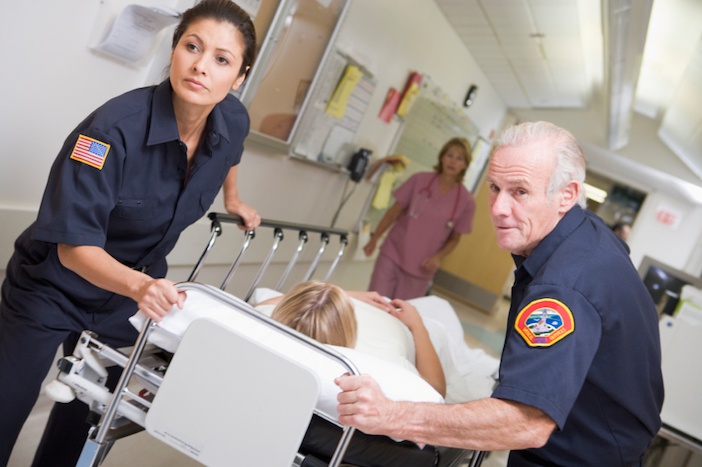
You understand how important it is to have a well-organized and fully stocked crash cart when a patient codes. Following Advanced Cardiac Life Support Guidelines (ACLS), most hospitals will have similar supplies on their carts. These include:
- Equipment to manage airways- bag valve masks, oxygen masks, intubation supplies, King airway sets, and oral and nasal airways, portable oxygen cylinders
- Emergency medications- Amiodarone, Atropine, Dopamine, Epinephrine and Sodium Bicarbonate, as well as others
- Medications for other common problems- Aspirin, Atropine, Benadryl, Epi Pens and Narcan are some examples
- IV access equipment- angiocaths, IV tubing, saline flushes, IV fluids, and blood draw equipment
- Cardiac monitor equipment and defibrillator
However, each individual hospital must take into account its particular patient population and needs when determining how to stock its crash carts. It is important to think through all possible scenarios and make certain that all necessary emergency supplies are on hand. Use the following list as an example of additional items that the best hospitals make certain to include in every crash cart.
Portable suction machine
Crash carts are often stocked with the assumption that in-wall suction will be available for clearing the airway during an emergency. Don’t make this mistake. A code can occur anywhere in the hospital, not just at the bedside, and you need to be prepared to provide suction at any time.
Even when running a code at the bedside, your patient’s in-wall suction equipment might not be properly set up. You can save valuable time by having your portable suction machine ready to go with the flip of a switch.
Concerned about a bulky suction machine taking up precious space on the top of your crash cart? New models are smaller and sleeker. Look for one with a mounting bracket that can be attached to the side of the cart.
Pediatric emergency supplies
Even on an adult unit, the best practice is to be prepared to treat every type of emergency. Some units may choose to keep a separate pediatric crash cart stocked, whereas others may keep a dedicated supply of pediatric equipment within the adult cart.
Make sure to have pediatric defibrillator paddles available. In addition, appropriate-sized oxygen masks, endotracheal tubes, laryngoscope blades, IV supplies, and pediatric doses of emergency medication should be stocked.
Procedure Trays
Sometimes more invasive procedures are necessitated during a code situation. When an airway cannot be established in a patient, a cricothyrotomy may need to be performed as a life-saving technique. Or there are times when a central line may need to be placed. Having a pre-packaged tray with all of the needed supplies for procedures such as these is invaluable. Consider also stocking additional sterile gloves and sterile fields as back-up.
Pre-printed Labels
This is an example of a small addition to your crash cart that can have a great effect on efficiency and patient safety. During a code, you likely have experienced the need to draw up several medications consecutively and rapidly. All syringes should be labeled with the name of the medication, dosage, and time prepared, yet this can feel like an added burden during a stressful time.
Having pre-printed and color coded labels for your emergency medications makes this a much easier task. Simply peel off the label for the appropriate medication, add the dosage and time, and place on the proper syringe. When emergency medications are properly labeled, this decreases the likelihood of the wrong medication being administered to a patient.
PPE
While PPE might not be specifically stocked on the crash cart, it will be needed whenever and wherever resuscitation must take place. Make certain that PPE is available wherever you might expect your crash cart to go.
When a patient suddenly deteriorates, you need to act fast. Participating in a code is demanding, even for the most-seasoned nurse. Making sure your crash cart contains all of your essential emergency supplies will help ensure things run smoothly.
Editor's Note: This blog was originally published in September 2015. It has been re-published with additional up to date content.














